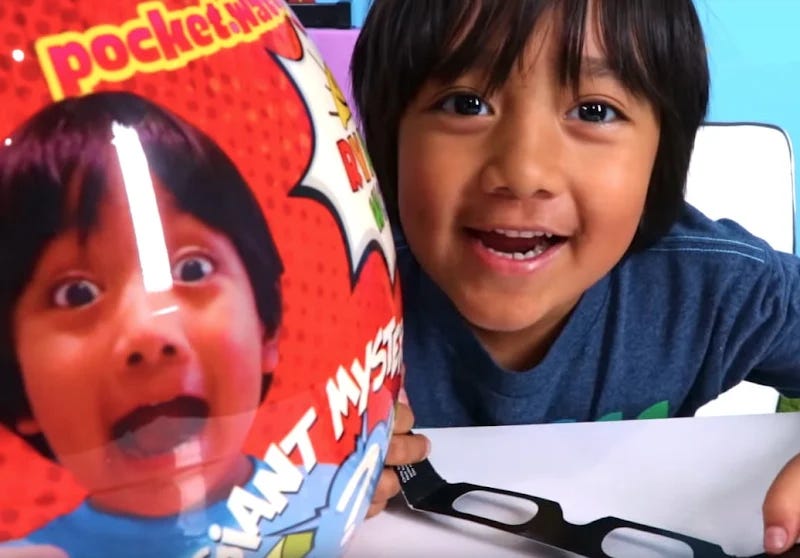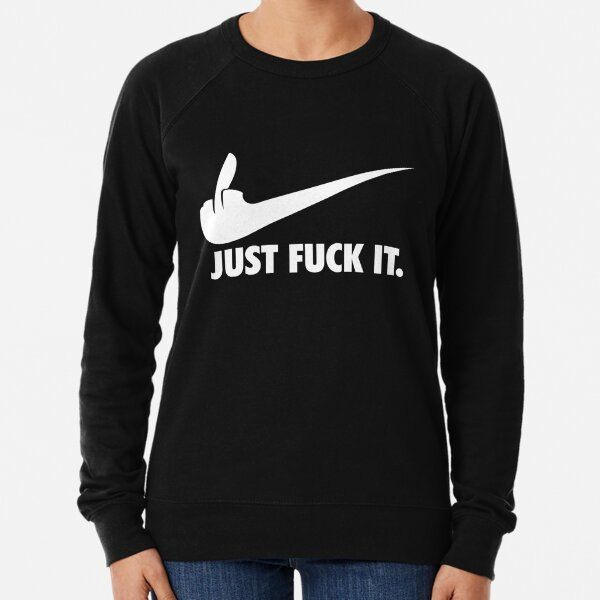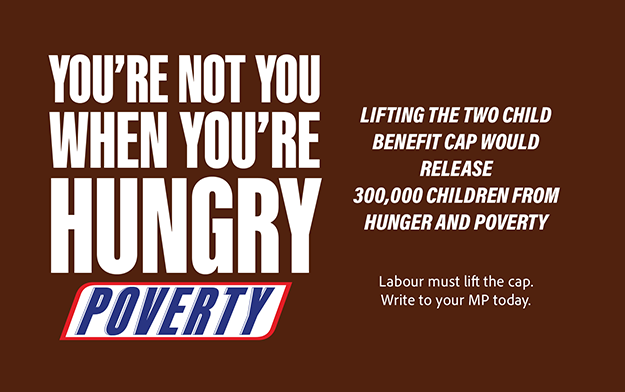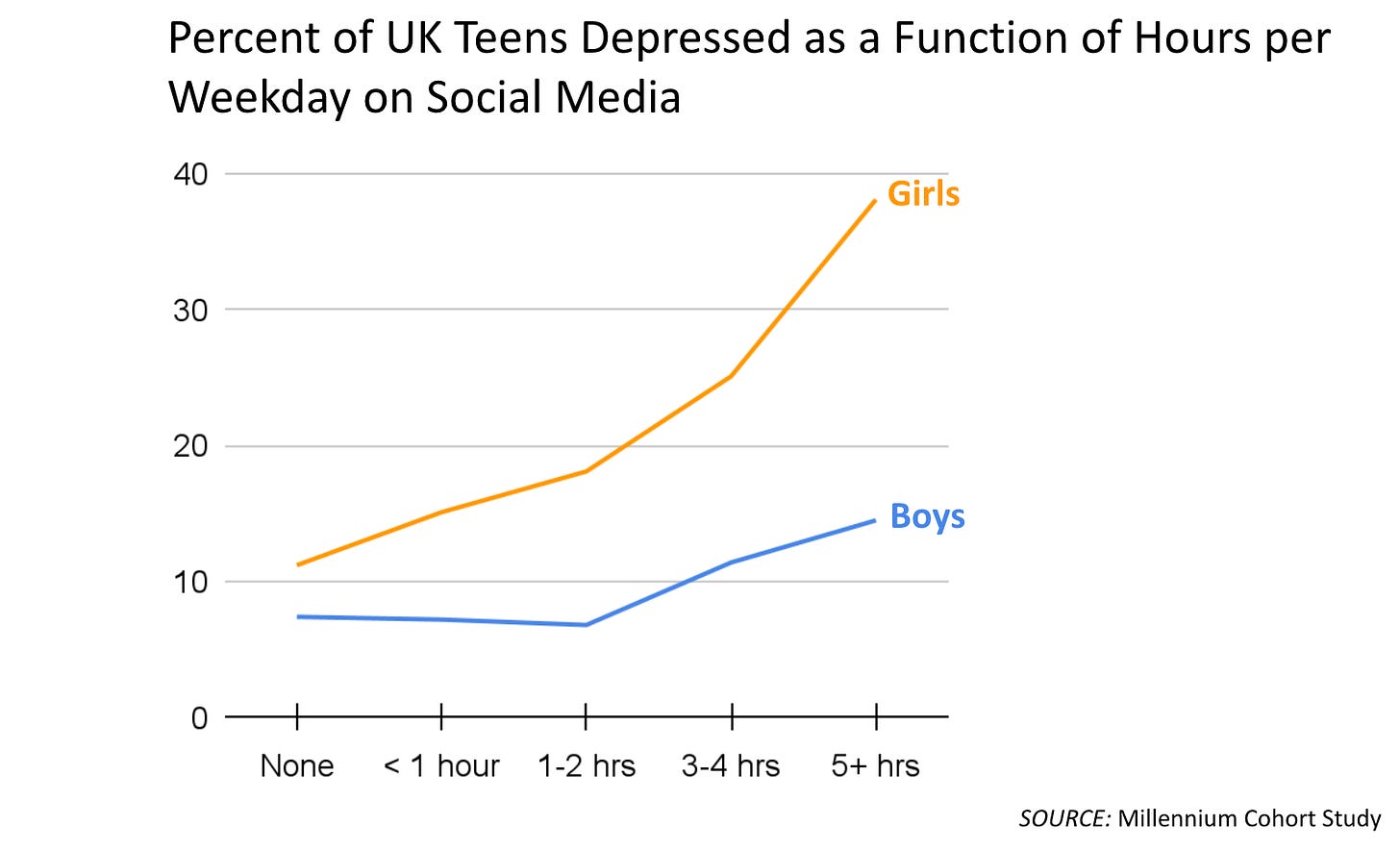Teenage gorilla is getting too much screen time, Lincoln Park Zoo officials say
This week,
The push to legally age-gate social media, driven by (of course) the unholy pursuit of the almighty ad dollar.
The Olympics kick off in your TikTok feed
And also:
I’m not saying she’s going to win, but I am going to say there’s still a chance. Hope is a powerful drug.
In Britain you can now be jailed for ‘conspiracy to cause a public nuisance’, 5 JustStopOil receive lengthy sentences for plans to block the M25
Video Game Roblox has 78MM daily users, more than half under age 13, with ambitions to grow that # tenfold. No surprise then that Roblox has a pedophile problem.
Also, game publisher Ubisoft somehow wandered into the culture wars over a black hero in Assassin’s Creed (somehow it’s more believable to have time travel than to have a black samurai)
This past June 11th was the first International Day of Play recognizing the inherent need for play in child development. See below how social media and smartphone adoption is interrupting kids’ development by interrupting their need to play.
Hims (and Hers) and Ro are part of a growing ($101B valuation) DTC meds industry, largely built from targeting young men’s insecurities. (nice to see our insecurities are an equal opportunity money maker)
Dating app Grindr is ‘blocked’ in the Paris Olympic Village, while others remain open. It’s apparently to help protect the privacy of gay athletes particularly those from countries where homosexuality is criminalized. (maybe they should hold the games around the next RNC, no problems there)
If you’ve been on the fence on getting an EV, now may be the time
Just F*ck It: Nike Pledged to Shrink Its Carbon Footprint. It Just Slashed the Staff Charged With Making That Happen.
Clearly what is called for, is a policy that goes beyond “defense of America’s border” to offering the population of the entire region both the chance for development at home and regularized movement within the region.
The “Crisis at the Border” is one of the defining issues of this coming election. Chartbook takes a look beyond the rhetoric at the #s. And what is clear, the budget for addressing ‘root causes’ ($1b annually) isn’t nearly enough (maybe this is how Kamala counters what is sure to be the argument against her).
And finally…
Sharks off Brazil coast test positive for cocaine
I’d like to hear from both candidates how they are going to stop the illegal flow of cocaine-laden sharks from crossing into our waters
"It's not what a movie is about, it's how it is about it." - Roger Ebert
Women’s Equality Party (with the help of London-agency Quiet Storm), parodies the Snickers ad to call on the new UK govt to end child poverty
(listen) How I Built This On athletic shoes: Olivier Bernhard and Caspar Coppetti. As everyone discusses what NIKE has been doing wrong (like letting go of everyone in charge of sustainability), it’s also worth considering what others have done right to take some of that share away
The Olympic Games are less a broadcasting spectacle and more a growing collection of digital video recaps (just like everything else in the world today. Sports. News. Vacation. Your weekend. All in a series of clips).
PS, if you’re curious about how the IOC sells itself to sponsors, here you go.
Yeah, yeah, but your scientists were so preoccupied with whether or not they could that they didn't stop to think if they should. - Jurassic Park
For Social Media and Kids
Here in the U.S., you need to be at least:
16 years old to get a driver’s license
18 years old to vote/serve in the military/buy a firearm
21 years old to consume alcohol and cigarettes (and now THC/CBD where it’s legal)
We age-gate movies (R=17 or older) and video games (M for Mature=17 or older). Yet to get onto social media, the bar is much younger: 13 years old with no age verification required.
(SEE Roblox above, with over half of its users under 13 it is both a video game AND a form of social media)
There’s a growing consensus that perhaps this is too young. Yet right now it's left to the parents to try to at least curb kids’ exposure if not delay it outright. But as we all know, that’s hard when ‘so-and-so’s mom let’s her do it’, potentially making matters worse as your child feels left out.
Would it be better if the government raised the age for everyone?
13 vs. 16 doesn’t seem like a lot, but in child development it’s massive.
80%
That’s the % of a child’s brain that is fully mature by about the age of 13. The remaining 20% is largely within the pre-frontal cortex, the area of the brain that controls our inhibitions and decision-making. It’s why we don’t trust a child to enter into contracts, drive a car, and the like.
At this age, children are reliant on the temporal lobe where emotions, memory and learning, and the reward system reign.
The very system social media manipulates through its own system of likes, comments and follows to trigger that dopamine hit and keep us coming back for more.
The consequence is a generation of teens who say they are ‘constantly online’ as their screen times.
Time spent online, particularly social media correlates with negative self-associations and declining mental health.
Much of this insight comes from “The Anxious Generation” by Jonathan Haidt, a Social Psychology Professor at NYU. In it, he breaks down both the cultural norms (helicopter parenting) that have created a decline in free play among children (and the loss of necessary personal interpersonal skills). Compounded by the introduction and rapid adoption of the internet, smartphones and social media which quickly took hold of Western culture and corresponded with declines in mental health, particularly among teens.
This proliferation of advertising-driven apps caused a change in the nature of time spent using a smartphone. By the early 2010s, our phones had transformed from Swiss Army knives, which we pulled out when we needed a tool, to platforms upon which companies competed to see who could hold on to eyeballs the longest.
But I want to pivot a bit and consider the role the ad industry has played in this. Because as we all know, there’s only one reason why this guy does anything:
“Show me the incentives – and I’ll show you the outcome”
All for the Almighty Ad $$$
How does Meta (Facebook/Instagram/Whatsapp) make money? Or Alphabet (Google/Youtube)? Or ByteDance (TikTok)?
The answer: Advertising.
99% of Meta’s annual $135B in revenue, or roughly the same size as the economy of Morocco, comes from advertising alone. Instagram accounts for $49.8B of that (or 37% of Meta’s annual ad revenue).
TikTok (ByteDance) has grown quickly to $16.1B in 2023 (+67% YOY).
Alphabet is a bit more diversified thanks to Cloud computing, Search and Adwords. So if we just consider Youtube on its own, that is $31.5B in annual ad revenue alone.
It’s no surprise then that these three (along with Amazon and Alibaba due to shopping) account for most of the global ad spend today.
These 3 have a vested interest in attracting and keeping our attention. Particularly teens.
Harvard recently conducted a first-of-its-kind study to measure both the users and targeted ad revenue against those under 18 on social media.
The study estimates:
$11B in ad spend in the US alone in 2022 across Facebook, Instagram, Snapchat, TikTok, X, and YouTube
$2.1B collected against those under 12 years old*
Youtube #1 with $959M
Instagram #2: $801MM
Facebook #3: $137MM
$8.6B collected against those 13-17 years old
Instagram #1 with $4B
TikTok #2: $2B
Youtube #3: $1.2B
*NOTE: Children’s Online Privacy Protection Act (COPPA) prohibits commercial websites and online services from collecting personal data from children under 13 without parental consent.
Social Slot Machines
The deliberate choices made by these platforms to both retain attention while delivering ever-more byte-size content to shove advertising messages (and revenue) in between have acted like catnip for teen’s young and impressionable minds.
Choices like:
Facebook prioritized “Likes” in the algorithm starting in 2009, which made content with more Likes more likely to appear up in your feed
Snapchat’s streak feature in 2015, gamified the act of connection drawing users in to reconnect even if there wasn’t anything to share
The ‘pull to refresh’ feature which turns your feed into a sort of ‘slot machine’ to see what gets repopulated onto your feed
Perhaps all of these pale in comparison to the impact of short-form video. We’re preternaturally drawn to moving imagery. Coupled with shorter formats and autoplay, our ability to break free becomes inhibited as we ‘doom scroll’. And that’s as an adult.
For teens and pre-teens, these short bursts of attention-grabbing videos are effectively rewiring their brains. Impacting their ability to focus on longer, more in-depth content; ultimately impacting their ability to learn.
It’s also introducing them to our adult insecurities. Skincare is one of the more recent examples, as teens watch the same ‘get ready with me’ videos as the rest of us they learn it’s never too early to fight off aging. Driving them to raid Sephora for Drunk Elephant , possibly doing more damage than good to their young skin (and definitely their parent’s pocketbooks).
‘I want to be a Youtuber when I grow up’
Young affiliates: nearly a fifth of British children aspire to be social media influencers
More than half of Gen Zers think they ‘can easily make a career in influencing,
Perhaps the most profound impact of social media on the youth is in their aspirations. Long-held professions like doctor, teacher, or president take a backseat to Influencer, Youtuber, and E-sports gamers. Now where would a kid get an idea like that from?
From the influencers they follow of course. Brands and ad agencies have been reaching young people through the people they follow, whether technically micro or macro influencers, years. And young impressionable minds have rightly learned that status in the form of followers, views, and likes is a great way to not only get free shit but maybe even get paid on top of it.

Whether it’s toy reviews on YouTube or dance challenges on TikTok, this formula has made stars and millionaires out of ordinary kids. But the quest to become the next Charli D’Amelio (152MM on TikTok) with huge followers hides the fact that it’s not just kids who are following them.
In fact, it’s often adults.
“She became popular really fast,” the mother, who was unnamed, said. However, that popularity came with a dark side — the mom soon noticed that most of the users commenting on her daughter’s posts were adult men.
The lure of fame and fortune can open many teens up to a world they’re unprepared for, including adults:
The Influencer Is a Young Teenage Girl. The Audience Is 92% Adult Men.
Facebook and Instagram are steering child predators to kids, New Mexico AG alleges
A recent NY Times investigation found 32 million connections to male followers among the 5,000 accounts examined by The Times. In addition, an analysis using image classification software from Google and Microsoft indicates that suggestive posts are more likely to receive “likes” and comments.
As the algorithm teaches the teens (and perhaps even their well-meaning parents) what resonates and builds online fame it also draws in a lot of unwanted attention as well. Of course for advertisers, this kind of nuance doesn’t matter because all they need are followers and engagement figures to help them decide who to support.
Growing Support for More Control
41 states sue Meta, claiming Instagram, Facebook are addictive, harm kids
Forcing social media companies to do more to protect their underage members seems to be one of the few things both parties agree on here in the U.S. A number of bipartisan bills have been introduced, yet the issue of how exactly remains thorny.
As for public opinion, the vast majority of adults agree the platforms need to give parents more control.
Age verification is being tried in a number of places, most notably in Australia and in Utah here in the U.S.. And even an outright ban til the age of 16 is starting to gain lawmakers support. The U.S. Surgeon General even admitted “13 is too young to be joining social media” without going so far as to support an outright ban. Instead opting to throw it back to the parents. “If parents can band together and say you know, as a group, we’re not going to allow our kids to use social media until 16 or 17 or 18 or whatever age they choose, that’s a much more effective strategy in making sure your kids don’t get exposed to harm early.”
These all face a number of hurdles, most notably here in the U.S. First Amendment rights.
However, for marketers, they could face more stringent rules a bit sooner.
In the U.S., a 2000 law The Children’s Online Privacy Protection Act (COPPA) Rule makes it illegal for websites and online services to collect personal information from kids under 13 without parents’ verifiable consent. Recently proposed changes would require separate opt-in from parents for any targeted advertising as well as limiting any ‘nudging to stay online’.
This doesn’t go as far as the EU, where parental consent is required up to age 16 to collect data.
Neither the EU nor the US puts an age requirement to be paid as an influencer, only stipulations on transparency for products targeted to minors and prohibitions on certain categories (plastic surgery for example).
Final Thought
The incentive of sales and ad revenue for the platforms and advertisers is too strong to trust they will act in the best interest of minors. The age of 13 here in the U.S. at present is an arbitrary #, which came about through political negotiation and lobbying on behalf of social networks. That age is too low to rightfully consider one is okay to enter into a contract, which is what you are doing when you sign up for TikTok, Instagram or the like.
It’s disingenuous for Meta, TikTok or Alphabet (or any advertiser for that matter) to argue it’s too difficult to fully police this. Behavioral targeting and tracking coupled now with advancing AI means they know more about you than you know about yourself. Which means if they can predict I’m likely to be in the market for a car soon, they can likely guess that someone isn’t of age and perhaps shouldn’t be sent/seeing what they’re currently being shown today online.
16 may feel arbitrary but it’s also the age at which most get their first driver’s license. Which means it’s the age at which one can actually prove their legal age. So at least by raising the age, we can raise the bar because right now anyone can pretend to be whatever age they want to be on these sites.




















